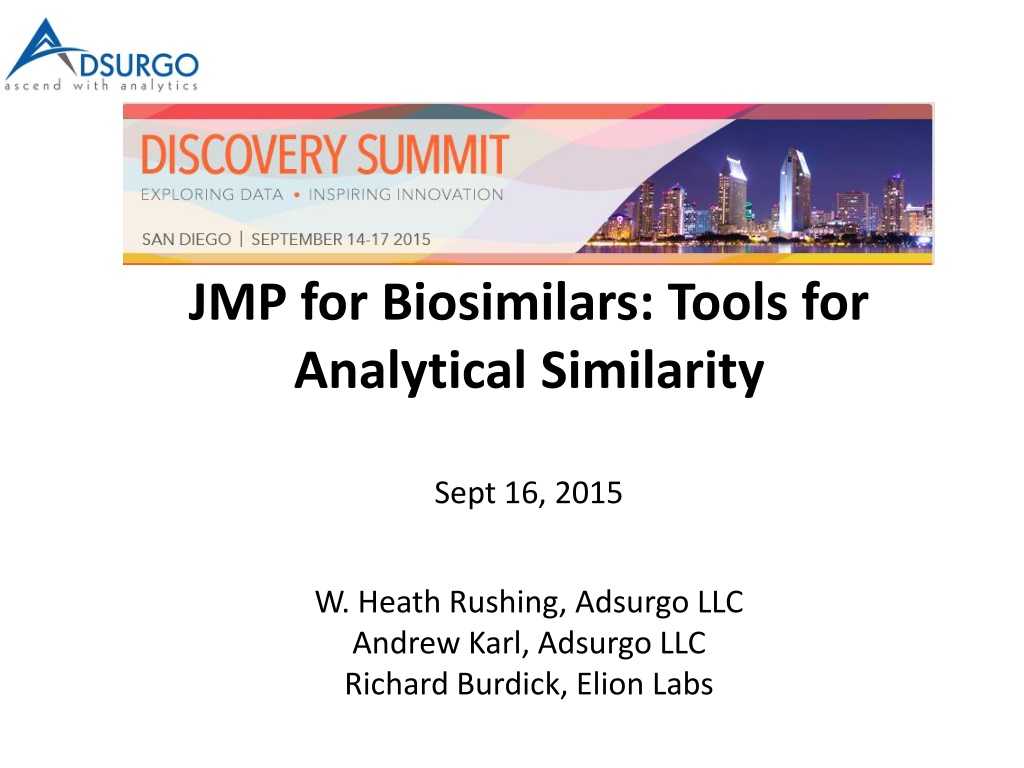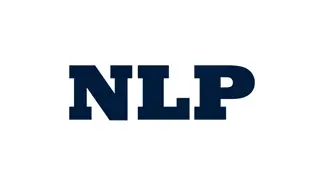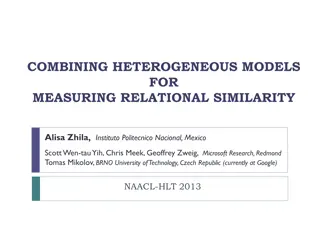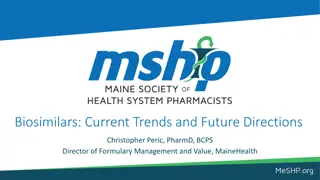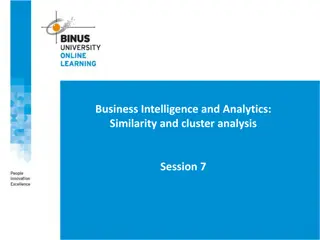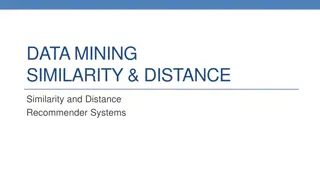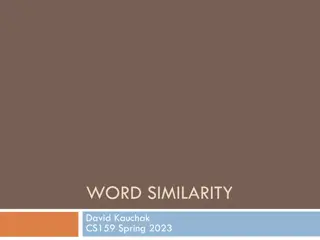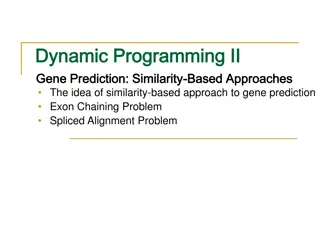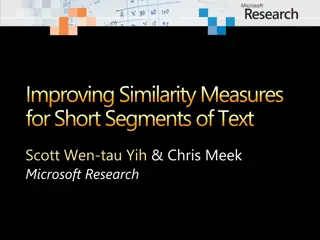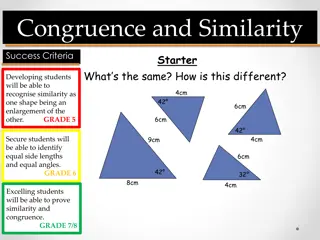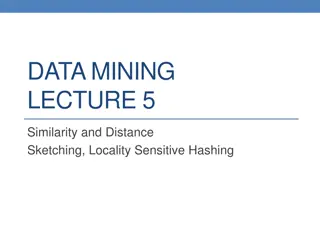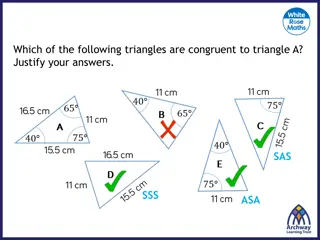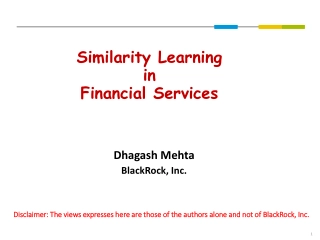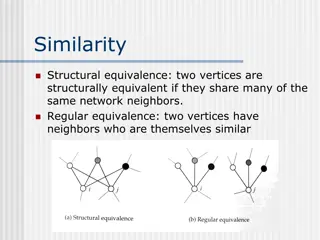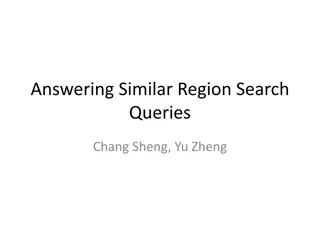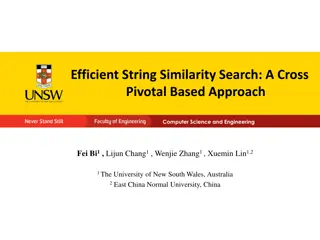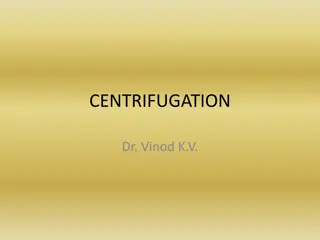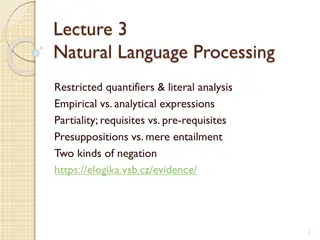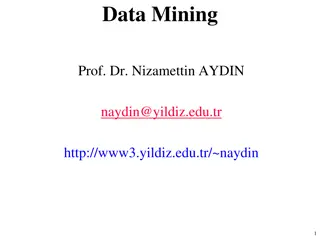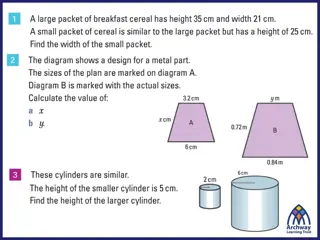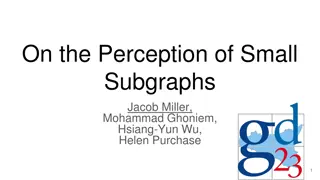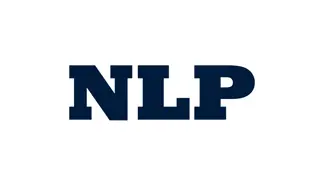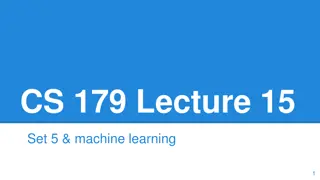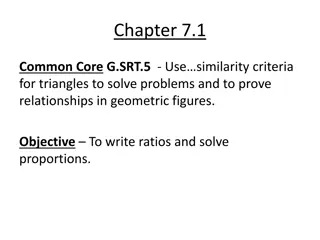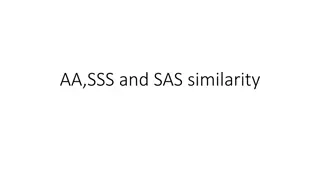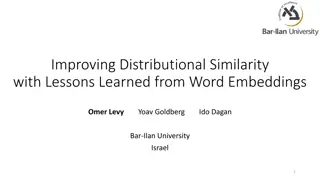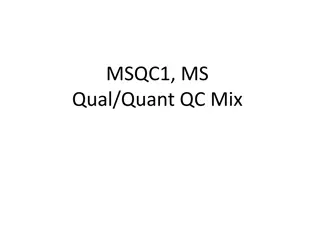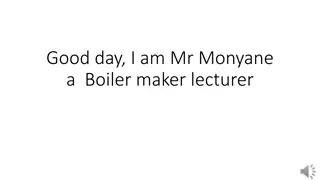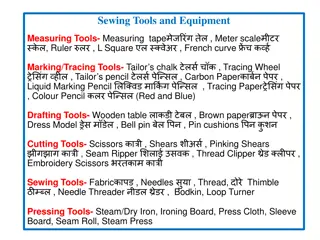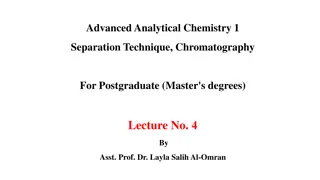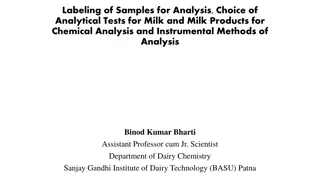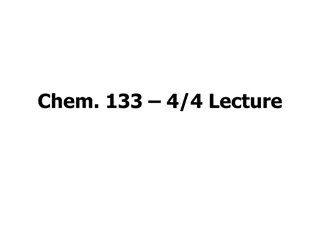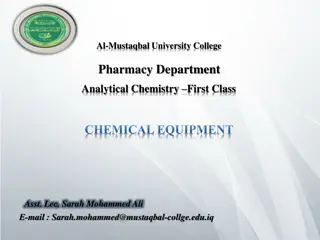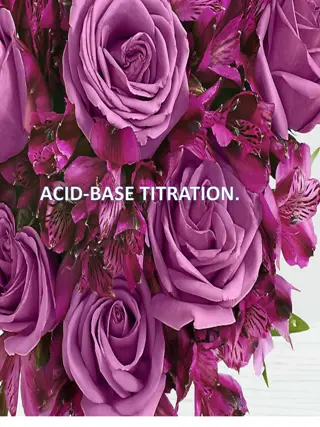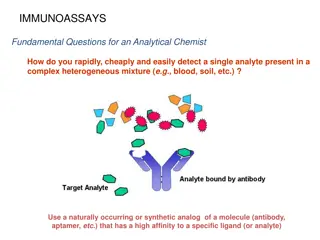Understanding Biosimilars: Tools for Analytical Similarity
Explore the world of biosimilars, the complexities of comparing generic and brand drugs, FDA regulations, and the first FDA-approved biosimilar. Learn about biological products, the Biologics Price Competition and Innovation Act, and the challenges in defining potency, purity, and stability in biologic products. Discover statistical equivalence demonstration methods and future considerations in this insightful guide.
Download Presentation

Please find below an Image/Link to download the presentation.
The content on the website is provided AS IS for your information and personal use only. It may not be sold, licensed, or shared on other websites without obtaining consent from the author. Download presentation by click this link. If you encounter any issues during the download, it is possible that the publisher has removed the file from their server.
E N D
Presentation Transcript
JMP for Biosimilars: Tools for Analytical Similarity Sept 16, 2015 W. Heath Rushing, Adsurgo LLC Andrew Karl, Adsurgo LLC Richard Burdick, Elion Labs
Outline Introduction Current FDA Thinking/Approach Demonstration: Statistical Equivalence using Sample Size and Variance Adjustment Method Future Considerations 2
What is a Generic? A drug product that is comparable to a brand/reference listed drug product in dosage form, strength, route of administration, quality and performance characteristics, and intended use. Center for Drug Evaluation and Research (CDER) A generic drug can be licensed when a brand drug is off patent; must contain same active product ingredients and dosage form. Hatch-Waxman Act of 1984. Common approach is to show statistical equivalence for quality and performance characteristics: Potency, purity, and stability. Reference: http://www.fda.gov/downloads/Drugs/DevelopmentApprovalProcess/SmallBusinessAssistance/ucm127615.pdf 4
What is a Biosimilar? Biological products are drugs that are developed from living organisms. Were patented by companies starting in the 1982. Contain proteins or other complex structures that are at risk of degradation throughout the manufacturing process. The additional structural complexity in biologic products creates additional challenges when defining targets for potency, purity, and stability in these products. Feroz, J.; Hershenson, S.; Khan, M. A.; Martin-Moe, S. (2015) Quality by Design for Biopharmaceutical Drug Product Development. Springer: New York 5
What is a Biosimilar? The Biologics Price Competition and Innovation Act (BPCI) of 2009 created an abbreviated licensure pathway for biological products shown to be similar or biosimilar to a pre-existing FDA-licensed product. The BPCI Act was an amendment [section 351(k)] to the Public Health Service (PHS) Act. Section 351(k) of the PHS Act defines biosimilar as highly similar to the reference product notwithstanding minor differences between the biological product and the reference product in terms of safety, purity, and potency of the product. Reference: FDA (2015) Scientific Considerations in Demonstrating Biosimilarity to a Reference Product, Guidance for Industry, United States FDA, Silver Spring, Maryland, USA. 6
First FDA-approved Biosimilar Sandoz, Inc. (Novartis) received approval for Zarxio, biosimilar to Amgen s Neupogen, on Mar 6, 2015. Amgen originally filed the biologics licensing agreement (BLA) for Neupogen on Feb 20, 1991. Zarxio received approval for all five indications associated with Neupogen. Reference: http://www.fda.gov/NewsEvents/Newsroom/PressAnnouncements/ucm436648.htm 7
Biosimilars http://www.biopharma-reporter.com/Markets-Regulations/Where-are-tomorrow-s-biosimilar-hotspots 8
Analytical Similarity Although there is only one FDA-approved biosimilar, it is estimated there are at least 280 biosimilars in the pipeline and clinical trials are growing at a rate of 20% per year. Describe the current FDA thinking/approach: Sample size and variance adjusted margin. Demonstrate the sample size and variance adjusted margin method using a JMP script. Outline future considerations for the current FDA approach. Reference: http://www.biopharma-reporter.com/Markets-Regulations/Where-are-tomorrow-s-biosimilar-hotspots 9
Guidance Documents In 2012, the FDA issued three (draft) guidance documents on the subject of biosimilars: FDA (2012a) Scientific considerations in demonstrating biosimilarity to a reference product. FDA, Silver Spring, Maryland, USA. FDA (2012b) Quality considerations in demonstrating biosimilarity to a reference protein product. FDA, Silver Spring, Maryland, USA. FDA (2012c) Biosimilars: Questions and Answers Regarding Implementation of the Biologics Price Competition and Innovation Act of 2009. FDA, Silver Spring, Maryland, USA. 11
Stepwise Approach To demonstrate biosimilarity, the FDA recommends applicants use a stepwise approach for comparison of the biosimilar to the reference product; referred to as the totality of evidence approach. Starts with extensive evaluation of CQAs associated with the structural and functional characterization of both the biosimilar and reference product. This extensive evaluation serves as the foundation of a biosimilar development program; known as analytical similarity. Analytical similarity requires the biosimilar to be highly similar to the reference product notwithstanding minor differences in clinical inactive components. Reference: FDA (2015) Scientific Considerations in Demonstrating Biosimilarity to a Reference Product, Guidance for Industry, United States FDA, Silver Spring, Maryland, USA. Reference: Tsong, Yi and OB CMC Analytical Biosimilar Method Development Team (Meiyu Shen, Cassie Xiaoyu Dong). Development of Statistical Approaches for Analytical Biosimilarity Evaluation [Powerpoint]. DIA/FDA Statistics Forum 2015. 12
Analytical Similarity Analytical similarity is an extensive evaluation of CQAs associated with the structural and functional characterization of both the biosimilar and reference product. 1. Identify CQAs. 2. Classify CQAs into three tiers of criticality. 3. Assess analytical similarity for CQAs based upon the different tiers. Different tiers require different levels of statistical rigor. Reference: Chow SC (2014) On Assessment of Analytical Similarity in Biosimilar Studies. Drug Des 3: 119. doi:10.4172/2169- 0138.1000e124. 13
Three Tier Approach Tier 1: Most critical. Statistical equivalence test. Tier 2: Mild to moderate critical/less critical Quality range method. Tier 3: Least critical to clinical outcomes Graphical. Reference: Tsong, Yi and OB CMC Analytical Biosimilar Method Development Team (Meiyu Shen, Cassie Xiaoyu Dong). Development of Statistical Approaches for Analytical Biosimilarity Evaluation [Powerpoint]. DIA/FDA Statistics Forum 2015. 14
Tier 1 Statistical Equivalence Since tier 1 is the most critical, it requires the most statistical rigor. Relies on the use of a statistical equivalence test. Generate 90% confidence interval for difference in means between reference product and biosimilar. Compare to equivalence criteria ( ). Selection of this equivalence criteria ( ) is the key to the outcome of analytical similarity. Reference: Tsong, Yi and OB CMC Analytical Biosimilar Method Development Team (Meiyu Shen, Cassie Xiaoyu Dong). Development of Statistical Approaches for Analytical Biosimilarity Evaluation [Powerpoint]. DIA/FDA Statistics Forum 2015. 15
Tier 1 Statistical Equivalence Selection of this margin (equivalence criteria) is the key to the outcome of analytical similarity. Current methods used: Fixed Margin Limentani Approach. Proposed FDA method is the sample size and variance adjusted margin. Focuses on power of the test for low sample sizes. Reference: Tsong, Yi and OB CMC Analytical Biosimilar Method Development Team (Meiyu Shen, Cassie Xiaoyu Dong). Development of Statistical Approaches for Analytical Biosimilarity Evaluation [Powerpoint]. DIA/FDA Statistics Forum 2015. 16
Statistical Equivalence using Sample Size and Variance Adjustment Method Step 1: Determine variability of reference product using the standard deviation. Step 2: Calculate statistical equivalence acceptance criteria as c * standard deviation of the reference product, where c = 1.5. Step 3: Compute 90% confidence interval on the difference between product means. Compare against acceptance criteria. Note: A test size of will construct a (1 2 ) confidence interval. 17
Statistical Equivalence using Sample Size and Variance Adjustment Method Method depends on the number of reference versus the number biosimilar lots used in the comparison: The total number of reference lots are less than or equal to the total number of biosimilar lots. The total number of reference lots are greater than the total number of biosimilar lots. 18
Statistical Equivalence using Sample Size and Variance Adjustment Method The total number of reference lots is less than or equal to the number of biosimilar lots. 1. Let Nr denote the total number of reference lots and Nb denote the number of biosimilar lots where Nr Nb. 2. All reference lots (Nr) and all biosimilar lots (Nb) will be used to calculate the difference between mean attribute measurements between the two products, and the associated 90% confidence interval. 3. All reference lots (Nr) are used to estimate the standard deviation (s) of the reference material. The test assumes that the attribute variance is constant across products. 4. Calculate the acceptance criterion as 1.5 * s. 5. Calculate a 90% confidence interval for a difference in means using the data from step 2. 6. Compare the 90% confidence interval to the acceptance criteria. The null hypothesis (products differ with respect to the attribute) is rejected if the endpoints of the confidence interval lie within the acceptance margin. Calculate the power for a given difference (s/8) and test size ( ). Reference: Dong, Xiaoyu (January 13, 2015) Statistical Revew and Evaluation of BLA No. 125553, Center for Drug Evaluation and Research, United States FDA, Silver Spring, Maryland, USA. 19
DEMONSTRATION - STATISTICAL EQUIVALENCE USING SAMPLE SIZE AND VARIANCE ADJUSTMENT METHOD WHERE NR NB 20
Statistical Equivalence using Sample Size and Variance Adjustment Method The total number of reference lots is greater than the number of biosimilar lots. 1. Let Nr denote the total number of reference lots, and Nb denote the number of biosimilar lots where Nb < Nr. The difference between the lot sizes will be represented by mr = Nr Nb. 2. A random subset (of size Nb) of the total number of reference lots (Nr) and all Nb biosimilar lots will be used to calculate the difference between mean attribute measurements between the two products, and the associated 90% confidence interval. 3. Use the remaining number of reference lots (mr) to estimate the standard deviation (s) of the reference material. The test assumes that the attribute variance is constant across products. 4. Calculate the acceptance criterion as 1.5 * s. 5. Calculate a 90% confidence interval for a difference in means using the data from step 2. 6. Compare the 90% confidence interval to the acceptance criteria. The null hypothesis (products differ with respect to the attribute) is rejected if the endpoints of the confidence interval lie within the acceptance margin. Calculate the power for a given difference (s/8) and test size ( ). Reference: Chow SC (2014) On Assessment of Analytical Similarity in Biosimilar Studies. Drug Des 3: 119. doi:10.4172/2169- 0138.1000e124. 21
DEMONSTRATION - STATISTICAL EQUIVALENCE USING SAMPLE SIZE AND VARIANCE ADJUSTMENT METHOD WHERE NR > NB 22
Future Considerations Yi Tsong & OB CMC Analytical Biosimilar Method Development Team: Since the margin depends on s, more appropriate test (than a t-test)? Develop multiple approaches be based on number of reference lots? Adjust the acceptance criteria (margin) based upon a constant shift? How to determine margin when equivalence uses ratio (versus difference)? Rick Burdick and Jose Ramirez (Amgen): Use all reference lots for 90% confidence interval if acceptance criteria set using scientific knowledge. Develop equivalence margin based on effect size: Use a confidence interval on the effect size. Correlated reference lots will require the value of c to be increased for desired power. Reference: Tsong, Yi and OB CMC Analytical Biosimilar Method Development Team (Meiyu Shen, Cassie Xiaoyu Dong). Development of Statistical Approaches for Analytical Biosimilarity Evaluation [Powerpoint]. DIA/FDA Statistics Forum 2015. Reference: Burdick, Richard K. and Jos G. Ramirez. Statistical Issues in Biosimilar Analytical Assessment: Perspectives on FDA ODAC Analysis [Powerpoint]. DIA/FDA Statistics Forum 2015. 24
REFERENCES 25
References 1. Burdick, Richard K. and Jos G. Ramirez. Statistical Issues in Biosimilar Analytical Assessment: Perspectives on FDA ODAC Analysis [Powerpoint]. DIA/FDA Statistics Forum 2015. 2. Chow SC (2014) On Assessment of Analytical Similarity in Biosimilar Studies. Drug Des 3: 119. doi:10.4172/2169- 0138.1000e124. 3. Dong, Xiaoyu (January 13, 2015) Statistical Revew and Evaluation of BLA No. 125553, Center for Drug Evaluation and Research, United States FDA, Silver Spring, Maryland, USA. 4. FDA (2012a) Scientific considerations in demonstrating biosimilarity to a reference product. United States FDA, Silver Spring, Maryland, USA. 5. FDA (2012b) Quality considerations in demonstrating biosimilarity to a reference protein product. United States FDA, Silver Spring, Maryland, USA. 6. FDA (2012c) Biosimilars: Questions and Answers Regarding Implementation of the Biologics Price Competition and Innovation Act of 2009. United States FDA, Silver Spring, Maryland, USA. 7. FDA (2015) Scientific Considerations in Demonstrating Biosimilarity to a Reference Product, Guidance for Industry, United States FDA, Silver Spring, Maryland, USA. 8. Feroz, J.; Hershenson, S.; Khan, M. A.; Martin-Moe, S. (2015) Quality by Design for Biopharmaceutical Drug Product Development. Springer: New York. 9. Tsong, Yi and OB CMC Analytical Biosimilar Method Development Team (Meiyu Shen, Cassie Xiaoyu Dong). Development of Statistical Approaches for Analytical Biosimilarity Evaluation [Powerpoint]. DIA/FDA Statistics Forum 2015. Websites: 1. http://www.biopharma-reporter.com/Markets-Regulations/Where-are-tomorrow-s-biosimilar-hotspots 2. http://www.fda.gov/downloads/Drugs/DevelopmentApprovalProcess/SmallBusinessAssistance/ucm127615.pdf [Powerpoint]. 26 3. http://www.fda.gov/NewsEvents/Newsroom/PressAnnouncements/ucm436648.htm
